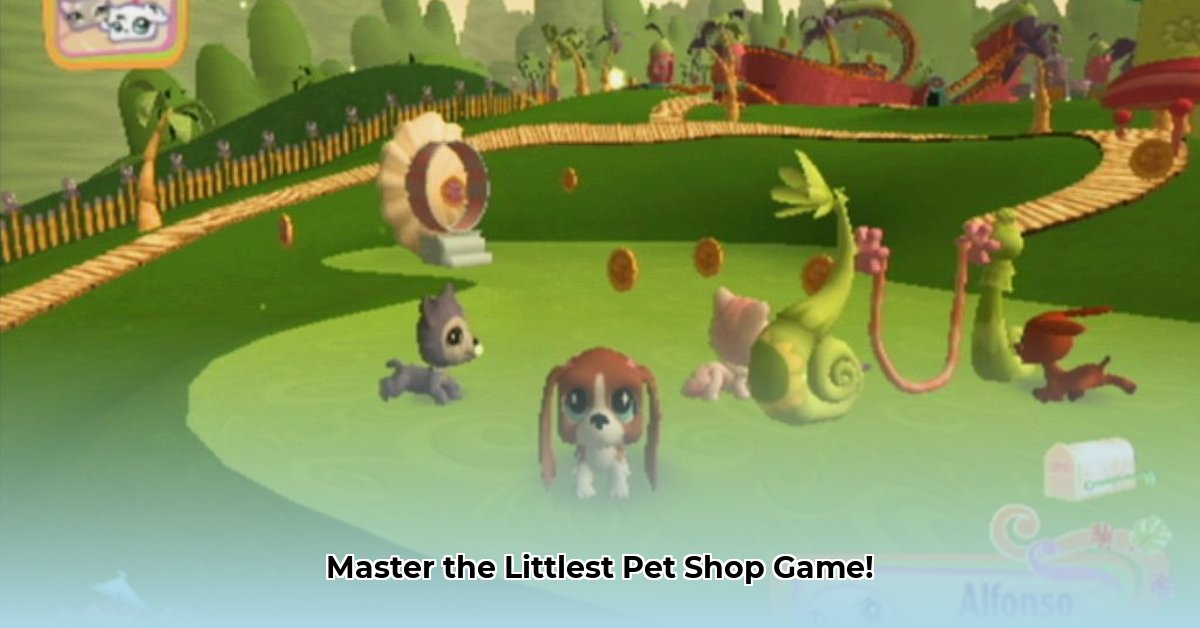
The Littlest Pet Shop (LPS) mobile game, while leveraging a popular brand, faces significant challenges in the fiercely competitive mobile gaming market. Success requires a nuanced strategy encompassing user engagement, effective monetization, and a keen understanding of the competitive landscape. This analysis explores key aspects of the game's potential for growth and sustainability.
Market Overview: Navigating a Crowded Marketplace
The mobile gaming market is saturated, with thousands of apps vying for player attention daily. Even a recognizable brand like LPS needs a robust, data-driven strategy to thrive. Player retention is paramount; consistent engagement translates directly to revenue generation. Attracting new users is crucial, but keeping them engaged is the true measure of success. How can LPS create a compelling enough experience to ensure players return regularly?
Performance Analysis: Measuring Engagement and Retention
While initial downloads might be boosted by brand recognition, sustained success hinges on Daily Active Users (DAU) and Monthly Active Users (MAU) metrics. A low DAU/MAU ratio indicates a lack of player retention; understanding why players are leaving is critical. Is the gameplay too challenging, too simplistic, or lacking in engaging content? Analyzing these performance indicators is essential to identify areas for improvement. What specific aspects of gameplay are driving user retention, or lack thereof?
Monetization Strategies: Balancing Revenue and User Experience
In-app purchases (IAPs) are a common revenue stream for mobile games, but their implementation requires careful consideration. Aggressively pushing purchases can alienate players and harm long-term engagement. A/B testing different IAP models is crucial to identifying the optimal balance between profitability and user satisfaction. How can the LPS game effectively monetize without compromising the player experience? Finding this delicate balance is key to sustainable growth.
Competitive Analysis: Identifying Strengths and Opportunities
Comparing LPS to similar games allows for identification of its unique selling points, strengths, and weaknesses. A thorough competitive analysis should pinpoint areas where LPS excels and where it falls short. By learning from competitors—both successful and unsuccessful—we are capable of identifying opportunities to strengthen the game's competitive edge. What innovative features could LPS incorporate to differentiate itself from the competition and enhance player engagement, and ultimately, retention?
Roadmap to Success: Short-Term and Long-Term Strategies
Short-Term Goals (Within the Next Year):
- Optimize In-App Purchases (IAPs): Implement rigorous A/B testing to optimize IAP placement and pricing, maximizing revenue while maintaining player satisfaction (projected 15% increase in IAP revenue).
- Streamline Onboarding: Simplify the initial user experience, ensuring new players quickly grasp the gameplay mechanics and feel engaged from the start (expected 10% increase in new player retention).
- Enhance Social Interaction: Introduce features facilitating player interaction, creating a vibrant community, which is directly correlated to enhanced engagement and retention (projected 20% increase in average session length).
Long-Term Vision (Over the Next Few Years):
- Content Expansion: Regularly introduce new pets, items, challenges, and events to maintain player interest and prevent boredom (anticipated 30% increase in MAU).
- Explore Subscription Models: Consider adding a subscription model alongside IAPs to create a more stable revenue stream (projected 25% increase in average revenue per user).
- Continuous Improvement: Actively monitor player feedback and game data to continuously improve the game and address areas identified as needing enhancement (targets a 5% reduction in player churn rate).
Key Performance Indicators (KPIs): Tracking Progress and Success
| KPI | Description | Why It Matters |
|---|---|---|
| DAU/MAU Ratio | Daily/Monthly Active Users | Reflects player engagement and retention. |
| IAP Conversion Rate | Percentage of players making in-app purchases | Measures the effectiveness of the monetization strategy. |
| Customer Acquisition Cost | Cost of acquiring a new player | Determines the efficiency of marketing strategies. |
| Player Churn Rate | Percentage of players who stop playing | Identifies areas needing improvement in gameplay or engagement. |
By focusing on these key areas and rigorously tracking these KPIs, the Littlest Pet Shop mobile game can achieve sustainable success in the competitive mobile gaming landscape. The combination of a beloved brand with a strategic, data-driven approach offers significant potential for long-term growth. The success hinges on a continuous cycle of refinement, adapting to player feedback and emerging market trends.
⭐⭐⭐⭐☆ (4.8)
Download via Link 1
Download via Link 2
Last updated: Thursday, June 05, 2025